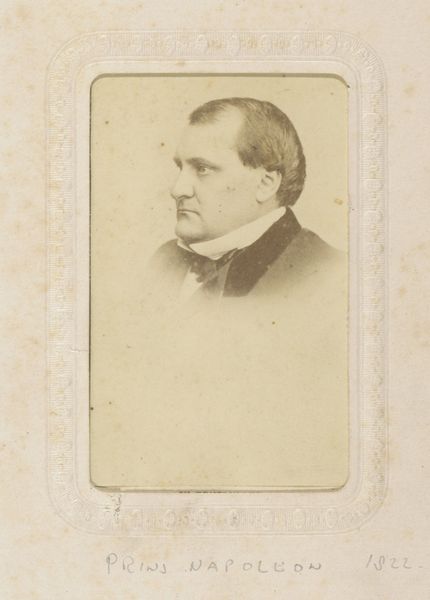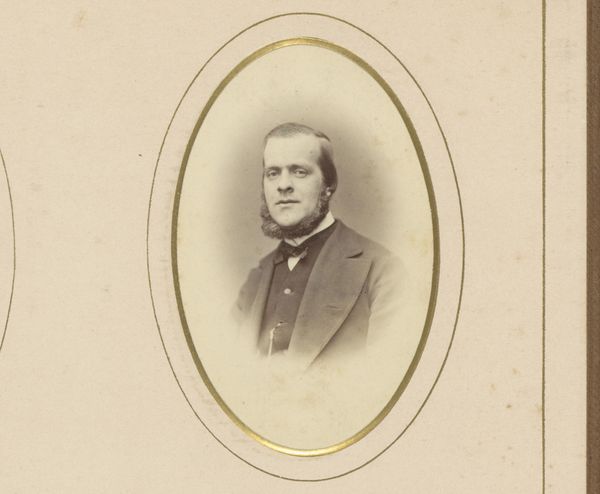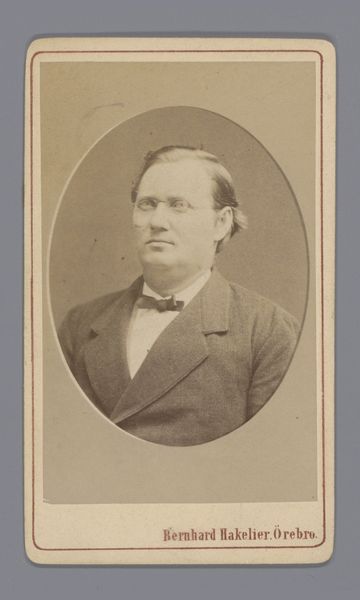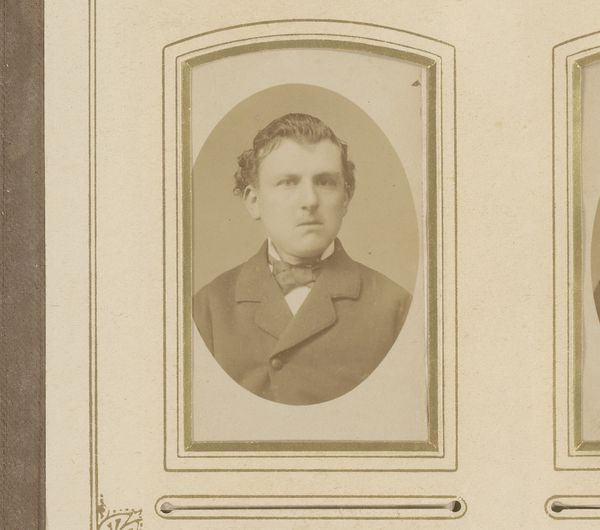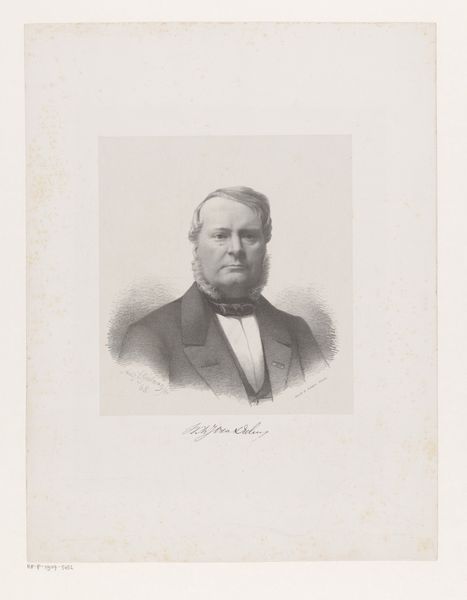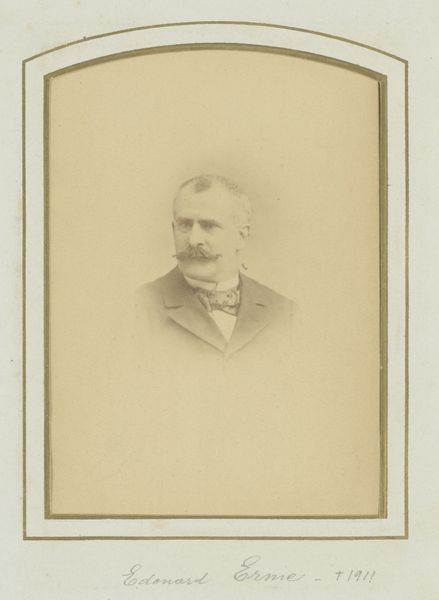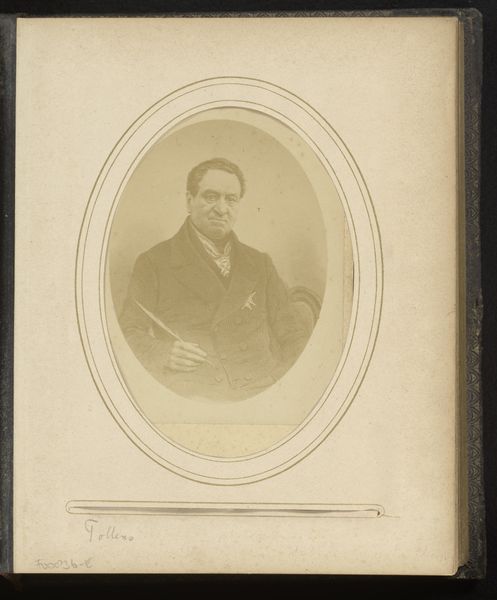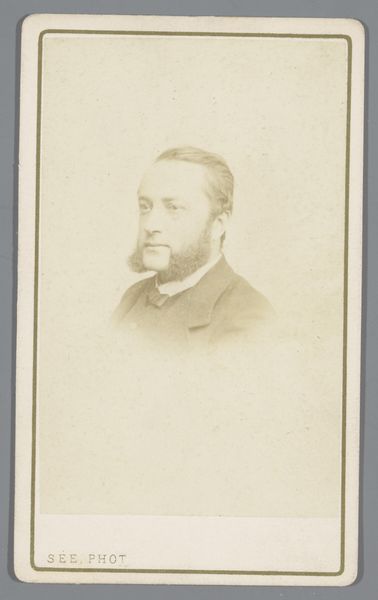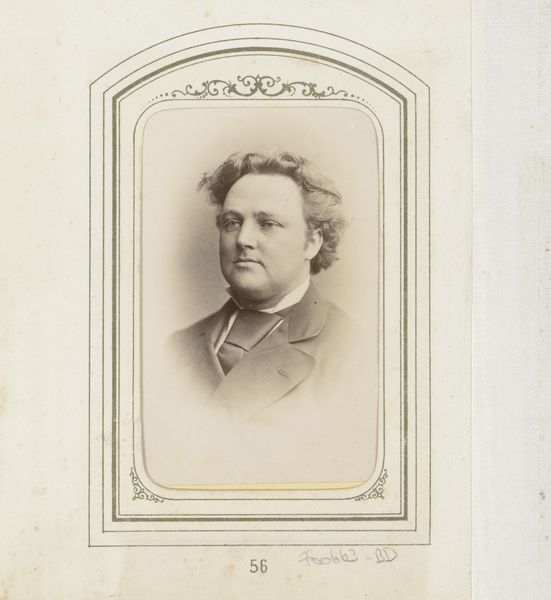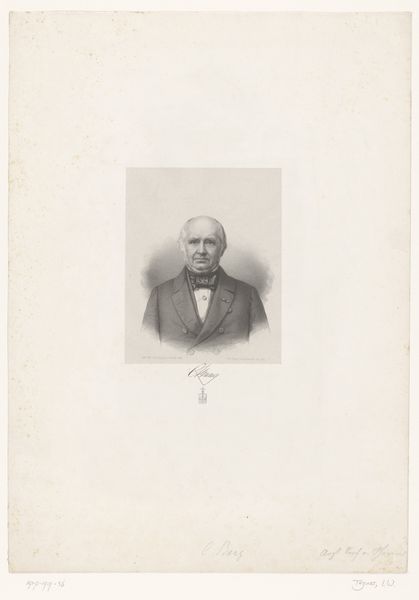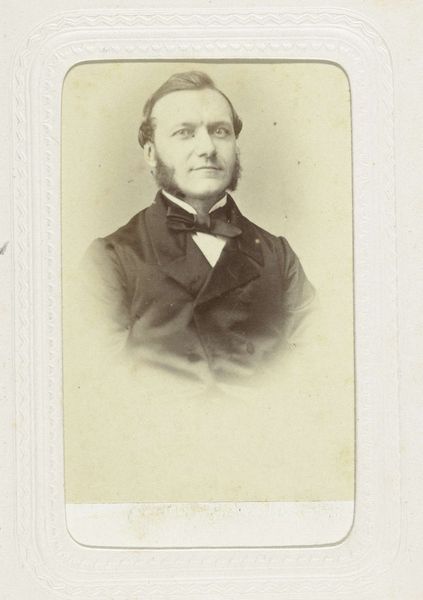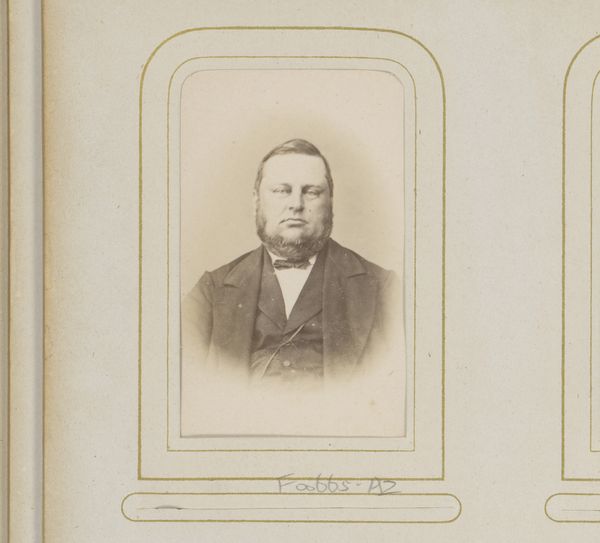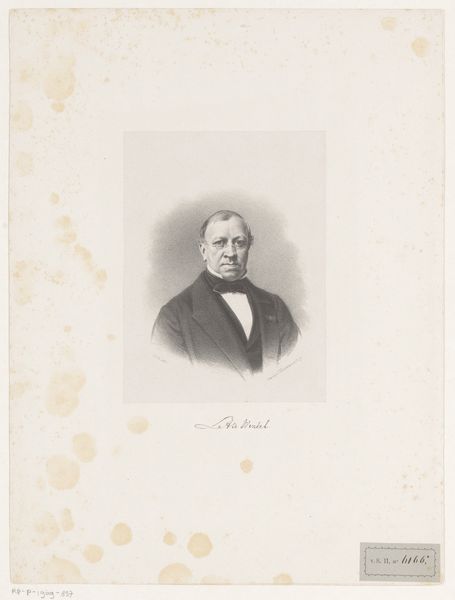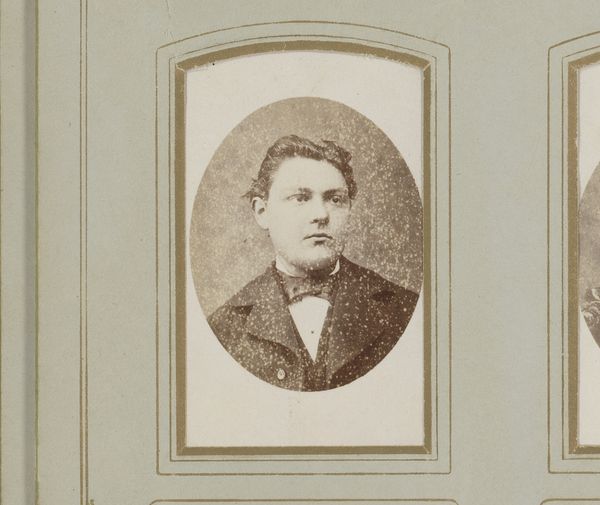
daguerreotype, photography
#
pencil drawn
#
aged paper
#
toned paper
#
photo restoration
#
pencil sketch
#
daguerreotype
#
photography
#
portrait reference
#
pencil drawing
#
yellow element
#
19th century
#
portrait drawing
#
realism
Dimensions: height 85 mm, width 53 mm
Copyright: Rijks Museum: Open Domain
Curator: Here we have a daguerreotype by Charles Reutlinger, dating from between 1850 and 1870. It's entitled “Portret van Napoleon Jozef Karel Paul Bonaparte”—that’s “Portrait of Napoleon Joseph Charles Paul Bonaparte” Editor: It has a stark simplicity. The oval frame almost spotlights the subject’s intense gaze. I find myself drawn to the textures, especially the tonal variations across his face, achieved through what looks like incredibly delicate manipulation of light and shadow. Curator: Indeed, Reutlinger operated during a transformative period in photographic portraiture, where class and power dynamics were intrinsically linked to representation. This image captures not merely a likeness, but an assertion of identity within a shifting socio-political landscape, right? Editor: The sharp detail, inherent to the daguerreotype process, invites the eye to study every minute surface, practically demanding formal assessment—his pursed lips, a bow tie askew. I'm intrigued by the frame, its decoration contrasting almost ironically with the severity of the portrait itself. It adds a layer of complexity, like a proscenium arch highlighting a moment of solemn observation. Curator: The formal rigidity and carefully constructed backdrop can be read as mechanisms employed by Bonaparte and Reutlinger to manage perceptions, to perpetuate an aura of power during a period of significant social and political turbulence in Europe. Considering his lineage, visibility was crucial. This wasn't simply a photograph; it was carefully crafted propaganda. Editor: I see your point. Yet I also appreciate the medium's honesty. Despite any posed intent, the very nature of photography captures details unintended. I am seeing the subject with such precise detail which offers access to texture and even presence. The slightly aged and toned paper adds to a vintage effect, further bringing out the subject. Curator: Absolutely. So, in reflecting on this portrait, perhaps we see a tension between what Bonaparte and Reutlinger wished to project and what the photograph inadvertently reveals: the burdens of lineage, the challenges of maintaining power, and the inescapable reality of mortality reflected in his visage. Editor: For me, its beauty lies in its balance and light. It draws attention to how photographic chemistry at that time had certain constraints and unique capabilities, and reminds us about that era's search to capture presence through an innovative technology.
Comments
No comments
Be the first to comment and join the conversation on the ultimate creative platform.
